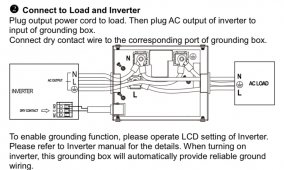The flickering was only seen in the refrigerator's as they were the only things with lights running on solar. The flickering only happens when the compressors on both fridges were running at the same time. Also, when they run at the same time, it starts flickering very little. The longer the compressor ran together, the more intense the flickering got. Therefore, it was not caught early on. We noticed it the first time about a week after we installed it, and I didn't think much of it. I started making it a habit to go and check the fridge when I heard it run. I started seeing the flickering because I was opening the fridge more and more often. It made me crazy because it didn't happen all of the time.
I started digging into the issue intensely, and it took me over a week to figure out that it was only happening when both fridges were running. We could reproduce the flicker by turning the fridge temp down on both fridges to get them to run. We started diagnosing the wiring. We were so sure it was something we did. No matter what we checked, everything was right. During this phase, we ran the wiring again and installed conduit. We double checked all connections and ensured that everything was up to code. When the system passed inspection, we asked the inspector about the flickering. After a short conversation, he asked if we had checked the inverter for issues. I then started researching the internet, talking to the dealer, did resets, and finally posted here. That whole process took a long time. It seems like it is hard for some readers here to get that.
I got some good tips here and we concentrated on the grounding with no luck. Only after removing the Growatt and installing my Giandel inverter did I realize where the problem was. The dealer has been a great sport and is taking the inverter back. I am going to order a new inverter. I am looking at a VE MultiPlus right now. I already have a VE 150/45 SCC, Cerbo GX and a VE smart shunt that I got for my RV. So I have everything but the inverter/charger. I am talking to the dealer about configuration. Once I am convinced it will do what I want, I may spring for it.
I hope that clears up what happened.




